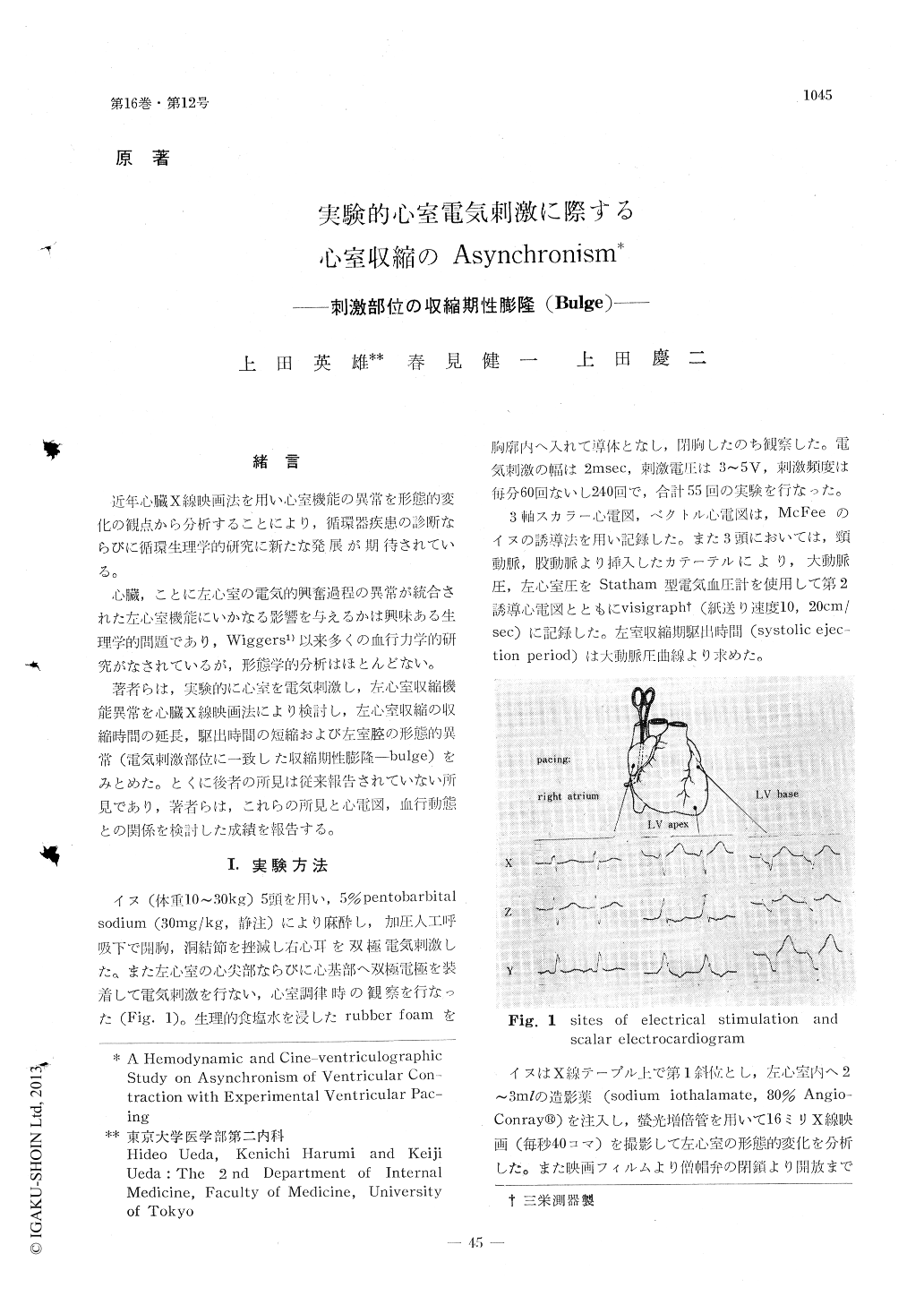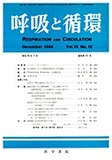Japanese
English
- 有料閲覧
- Abstract 文献概要
- 1ページ目 Look Inside
緒言
近年心臓X線映画法を用い心室機能の異常を形態的変化の観点から分析することにより,循環器疾患の診断ならびに循環生理学的研究に新たな発展が期待されている。
心臓,ことに左心室の電気的興奮過程の異常が統合された左心室機能にいかなる影響を与えるかは興味ある生理学的問題であり,Wiggers1)以来多くの血行力学的研究がなされているが,形態学的分析はほとんどない。
著者らは,実験的に心室を電気刺激し,左心室収縮機能異常を心臓X線映画法により検討し,左心室収縮の収縮時間の延長,駆出時問の短縮および左室腔の形態的異常(電気刺激部位に一致した収縮期性膨隆—bulge)をみとめた。とくに後者の所見は従来報告されていない所見であり,著者らは,これらの所見と心電図,血行動態との関係を検討した成績を報告する。
Several investigators, by recording intra-ventricular pressures and cardiac output, have studied the difference in the effects of atrial and ventricular pacing on cardiac func-tion. Although the differences have been explained by a less synchronous ventricular contraction or lack of synchronous atrial contraction in a case of ventricular pacing, a direct evidence has not been obtained.
In this study, cine-ventriculography was applied to analyze the effect of the difference in the spread of ventricular excitation on the ventricular contraction sequence.
Method: In five open-chest, anesthetized mongrel dogs, bipolar stimulating electrodes were attached to the right atrial appendage, epicardial surface of the base and apex of the left ventricle for stimulation and the sinus node was crushed.
Scalar electrocardiogram, left ventricular and aortic pressures were recorded and cine-ventriculogram of the left ventricle (16 mm film, 40 frames/sec.) was taken with the injection of small amount of contrast mate-rial into the ventricle while the heart was driven from each of the three sites at varing rate between 60 and 240 beats/min. Cine-ventriculogram was analyzed frame by frame and the observations were related to the changes in hemodynamic parameters for each of stimulation.
Results
1) Prolongation of systolic duration asso-ciated with shortening of systolic ejection period and a slight fall of aortic pressure were observed with the ventricular pacing, compared to those with the atrial pacing at the same rate of stimulation. As the rate of stimulation was increased, relative prolonga-tion of systolic duration with ventricular pacing became more pronounced.
2) Paradoxical systolic expansion of the left ventricular cavity, being localized to the site of ventricular stimulation was observed on cine-ventriculogram. This phenomenon (systolic bulge) was observed with the sti-mulation of the base as well as the apex of the ventricle, but not with the atrial stimu-lation, and this was consistently reproducible in any given experiment. Frame to frame analysis of ventricular wall motion during systole revealed that the bulge appears in late systole, while the rest of the ventricular myocardium is still contracting.
Discussion: Relative prolongation of systo-lic duration observed with ventricular pacing can be ascribed to the prolongation of the spread of ventricular excitation. The systolic bulge, observed cineventriculographically at the site of ventricular stimulation in late systole, can be regarded as an evidence of asynchronicity of ventricular contraction. This phenomenon may he explained by the occur-rence of earlier contraction and relaxation of the site of stimulation with delayed cont-raction of the rest of the myocardium, produced by slow muscular conduction of excitation from the site of stimulation. This phenomenon may be, in part, responsible for the reduced efficiency of cardiac perfo-rmance during ventricular stimulation.

Copyright © 1968, Igaku-Shoin Ltd. All rights reserved.


